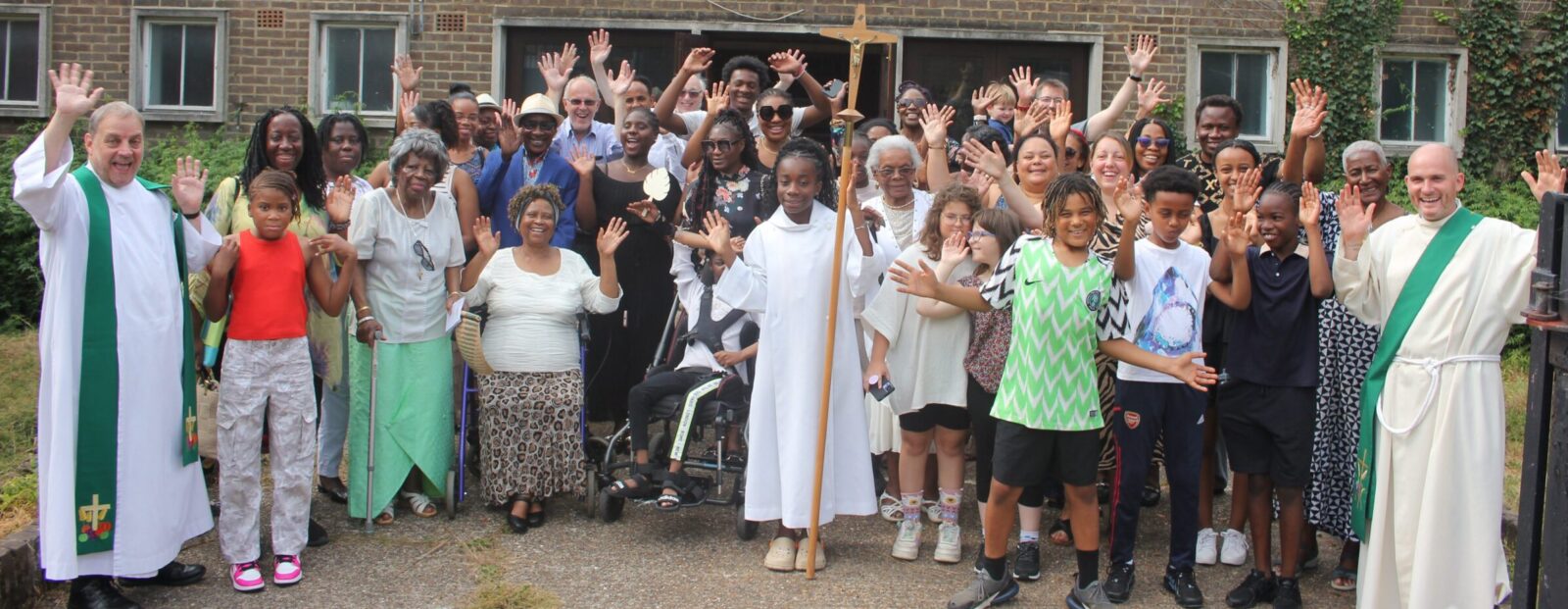The Advent Wreath – what is it and why?

Advent is the start of the Church’s liturgical year. This year it begins on Sunday, November 29th.
Advent encompasses the four Sundays and weekdays leading up to the celebration of Christmas.
The Advent season is a time of preparation for our hearts and minds for the anniversary of the Lord’s birth on Christmas.
At St Michael and St George’s Church, White City we celebrate Advent by putting up an Advent Wreath and lighting candles each week. Our Wreath stands near the altar and we are all encouraged to look at it and contemplate the meaning of Advent.
The use of the wreath and candles during Advent are a longstanding tradition that was originally adopted by Christians in the Middle Ages as part of their spiritual preparation for Christmas.
The wreath and candles are full of symbolism tied to the Advent season. The wreath itself, which is made of various evergreens, signifies continuous life. The circle of the wreath, which has no beginning or end, symbolizes the eternity of God, the immortality of the soul, and the everlasting life we find in Christ.
Even the individual evergreens that make up the wreath have their own meanings that can be adapted to our faith. The laurel signifies victory over persecution and suffering. The holly signifies immortality and the ivy binds all together and signifies strength and healing. The pine cones that decorate the wreath symbolize life and resurrection. The wreath as a whole is also a crown and it reminds us of both the immortality of our souls and God’s promise of everlasting life to us through Christ our King.
The candles also have their own special significance. The four candles represent the four weeks of Advent, and one candle is lit each Sunday. Three of the candles are purple because the colour violet is a liturgical colour that signifies a time of prayer, penance, and sacrifice.
The first candle, which is purple, symbolizes hope. It is sometimes called the “Prophecy Candle” in remembrance of the prophets, especially Isaiah, who foretold the birth of Christ. It represents the expectation felt in anticipation of the coming Messiah.
The second candle, also purple, represents faith. It is called the “Bethlehem Candle” as a reminder of Mary and Joseph’s journey to Bethlehem.
The third candle is pink and symbolizes joy. It is called the “Shepherd’s Candle,” and is pink because rose is a liturgical colour for joy. The third Sunday of Advent is Gaudete Sunday and is meant to remind us of the joy that the world experienced at the birth of Jesus, as well as the joy that the faithful have reached the midpoint of Advent.
On the fourth week of Advent, we light the final purple candle to mark the final week of prayer and penance as we wait for the birth of our Saviour. This final candle, the “Angel’s Candle,” symbolizes peace. It reminds us of the message of the angels: “Peace on Earth, Good will towards all.”
The Advent wreath includes a white candle, placed in the middle of the wreath and lit on Christmas Eve. This candle is called the “Christ Candle” and represents the life of Christ. The colour white is for purity—because Christ is our sinless, pure Saviour.
Keeping a prayerful Advent is an excellent way to prepare your mind and heart for the true meaning of Christmas.

